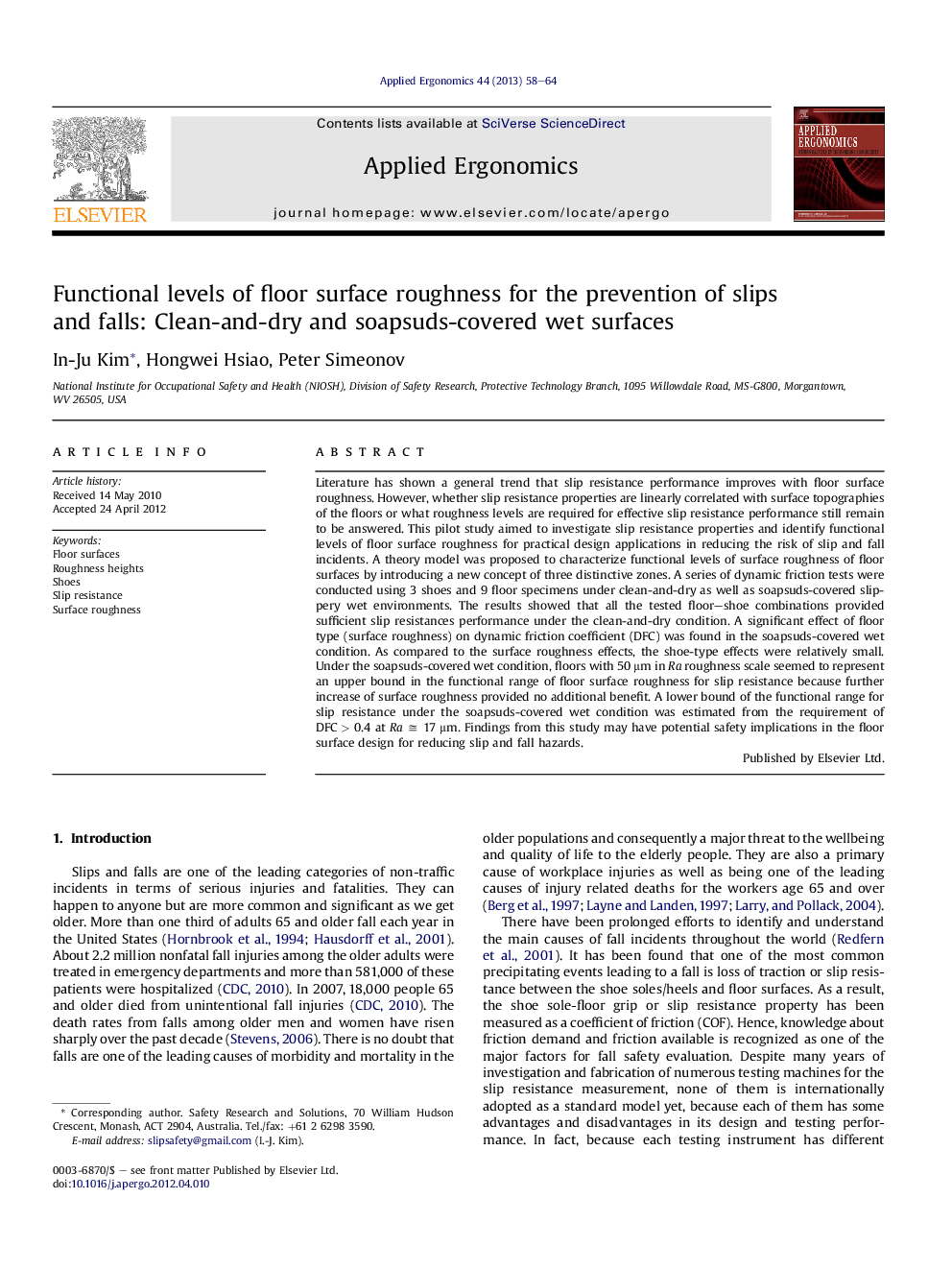| کد مقاله | کد نشریه | سال انتشار | مقاله انگلیسی | نسخه تمام متن |
|---|---|---|---|---|
| 549374 | 872366 | 2013 | 7 صفحه PDF | دانلود رایگان |

Literature has shown a general trend that slip resistance performance improves with floor surface roughness. However, whether slip resistance properties are linearly correlated with surface topographies of the floors or what roughness levels are required for effective slip resistance performance still remain to be answered. This pilot study aimed to investigate slip resistance properties and identify functional levels of floor surface roughness for practical design applications in reducing the risk of slip and fall incidents. A theory model was proposed to characterize functional levels of surface roughness of floor surfaces by introducing a new concept of three distinctive zones. A series of dynamic friction tests were conducted using 3 shoes and 9 floor specimens under clean-and-dry as well as soapsuds-covered slippery wet environments. The results showed that all the tested floor–shoe combinations provided sufficient slip resistances performance under the clean-and-dry condition. A significant effect of floor type (surface roughness) on dynamic friction coefficient (DFC) was found in the soapsuds-covered wet condition. As compared to the surface roughness effects, the shoe-type effects were relatively small. Under the soapsuds-covered wet condition, floors with 50 μm in Ra roughness scale seemed to represent an upper bound in the functional range of floor surface roughness for slip resistance because further increase of surface roughness provided no additional benefit. A lower bound of the functional range for slip resistance under the soapsuds-covered wet condition was estimated from the requirement of DFC > 0.4 at Ra ≅ 17 μm. Findings from this study may have potential safety implications in the floor surface design for reducing slip and fall hazards.
► Effects of floor surface roughness were analyzed by unlike environments and shoes.
► Three distinctive zones were suggested to characterize surface roughness on DFCs.
► The most effective levels of surface roughness were identified by the three zones.
► Results from this study may provide a floor design idea to improve slip resistance.
Journal: Applied Ergonomics - Volume 44, Issue 1, January 2013, Pages 58–64